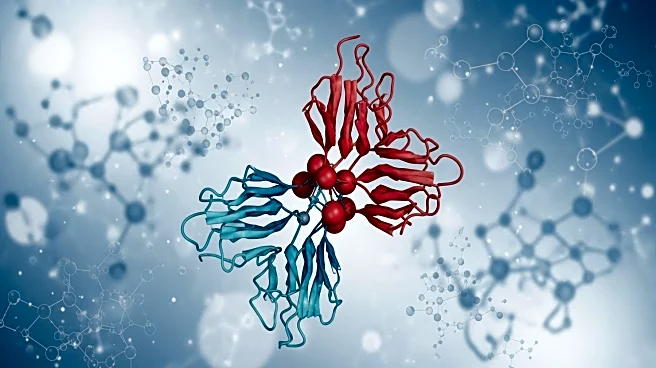What's Happening?
An international team of mathematicians, led by Taeho Kim from Lehigh University, has introduced a new predictive modeling method called Maximum Agreement Linear Predictor (MALP). This approach aims to improve
the alignment between predicted and actual outcomes in fields such as health, biology, and social sciences. MALP optimizes the Concordance Correlation Coefficient (CCC), which measures how well data points align along a 45-degree line on a scatter plot, combining precision and accuracy. Unlike traditional methods that focus on minimizing average error, MALP seeks to maximize agreement between predicted and real values. The method has been tested on real-world data, including eye scans and body fat measurements, demonstrating its effectiveness in producing predictions that closely match actual values.
Why It's Important?
The development of MALP is significant as it offers a new tool for data scientists and researchers, particularly in fields where agreement with actual data is more critical than merely reducing error. This method could enhance predictive modeling in medicine, public health, economics, and engineering, providing more reliable predictions that align closely with real-world outcomes. By focusing on agreement rather than just error minimization, MALP could improve decision-making processes and the accuracy of predictive models, benefiting industries that rely heavily on data-driven insights.
What's Next?
The researchers plan to extend MALP beyond linear predictors to a more general class, potentially broadening its applicability across various fields. This extension could remove the linear restriction, making MALP a more versatile tool for predictive modeling. As the method gains traction, it may influence how predictive models are developed and utilized, encouraging a shift towards prioritizing agreement with actual data in research and industry applications.
Beyond the Headlines
The introduction of MALP highlights the evolving nature of predictive modeling, emphasizing the importance of agreement over traditional error minimization. This shift could lead to ethical considerations in data analysis, as more accurate predictions may impact public policy and resource allocation. Additionally, the method's focus on agreement could influence cultural perceptions of data reliability and the trust placed in predictive models.












